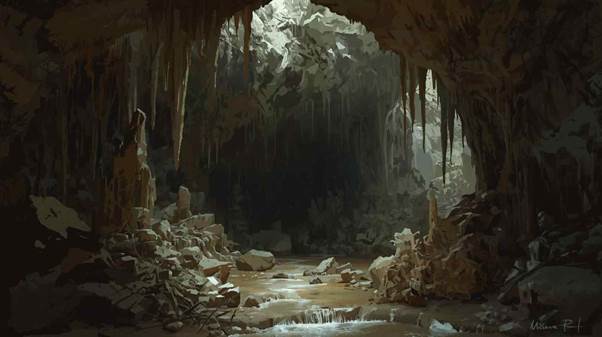The mysterious world of cave ecosystems has fascinated scientists and explorers for centuries. These hidden habitats, often concealed beneath the earth’s surface, are home to some of the most unique and specialized species on the planet. Unlike surface environments, cave ecosystems function in darkness, relying on limited resources and delicate balances. From rare blind fish to colonies of bats, these underground systems reveal how life adapts to extreme conditions.
Table of Contents
This article explores the definition, history, importance, challenges, and real-world examples of cave ecosystems while highlighting their role in biodiversity and human survival.

Defining Cave Ecosystems
Cave ecosystems are self-sustaining environments found within natural underground chambers. They often include three distinct zones:
• The entrance zone, where light partially penetrates
• The twilight zone, with minimal light and reduced plant life
• The dark zone, where no sunlight reaches and species depend on other energy sources
Unlike forests or oceans, cave ecosystems are nutrient-limited and fragile, making them some of the most unique environments on Earth.
Evolution and Background of Cave Ecosystems
Origins of Underground Habitats
Caves have existed for millions of years, formed by geological processes such as erosion, volcanic activity, and limestone dissolution. Over time, species adapted to these underground environments, creating ecosystems that are highly specialized and resilient in unique ways.
Adaptations Over Time
Organisms in cave ecosystems developed remarkable traits, including:
• Lack of pigmentation and eyesight in many cave-dwelling fish and insects
• Extended lifespans due to slower metabolic rates
• Specialized feeding strategies relying on organic matter brought in by water or animals
These adaptations show how evolution has shaped survival in lightless, resource-poor environments.
Importance of Cave Ecosystems
Biodiversity Hotspots
Despite their harsh conditions, cave ecosystems support rare species that cannot be found elsewhere. Troglobites, for example, are organisms that spend their entire lives in caves, making them irreplaceable in global biodiversity.
Benefits to Humans
Cave ecosystems offer several benefits that impact human life directly and indirectly:
• Freshwater sources from underground rivers
• Habitat for bats that control insect populations
• Insights into climate history through cave formations like stalagmites and stalactites
By studying caves, scientists can also uncover clues about early human civilizations, as many ancient communities used caves for shelter and art.
Adaptations and Survival in Cave Ecosystems
Sensory Enhancements
In the absence of light, many cave animals rely on non-visual senses:
• Bats use echolocation to navigate and hunt
• Fish and amphibians develop heightened sensory organs to detect vibrations
• Insects and spiders adapt with elongated antennae to sense their surroundings
Behavioral Strategies
Survival in cave ecosystems often depends on energy efficiency. Species adopt behaviors such as:
• Reduced movement to conserve energy
• Feeding on scarce resources like guano, detritus, or microorganisms
• Forming colonies, such as bat roosts, to maintain warmth and enhance survival chances
Challenges Facing Cave Ecosystems
Human Impacts
The fragility of cave ecosystems makes them highly vulnerable to human activities. Mining, tourism, and groundwater pollution disrupt delicate balances, leading to habitat loss and species decline. Overuse of caves for recreation can also harm sensitive organisms that cannot recover quickly.
Climate Change Pressures
Global warming poses a significant threat to cave ecosystems. Rising temperatures and altered precipitation patterns affect water availability, leading to drying cave rivers or flooding cave chambers. These changes endanger both resident species and human communities that depend on cave water systems.

Real-World Examples of Cave Ecosystems
Mammoth Cave, USA
The world’s longest cave system hosts rare species like eyeless fish and unique cave shrimp. Its biodiversity makes it a UNESCO World Heritage Site.
Waitomo Glowworm Caves, New Zealand
Known for its magical glowworm displays, this cave ecosystem demonstrates how organisms adapt to attract prey in complete darkness.
Postojna Cave, Slovenia
This cave houses the olm, a rare amphibian adapted to life underground. Its presence symbolizes the evolutionary wonders of cave ecosystems.
Conservation of Cave Ecosystems
Protection Strategies
Efforts to protect cave ecosystems include:
• Regulating tourism to minimize human disturbance
• Preserving groundwater quality by reducing pollution
• Establishing protected areas and national parks around cave systems
Community and Global Action
Local and global initiatives play a vital role in safeguarding caves. Educational programs raise awareness of their fragility, while eco-tourism projects encourage sustainable interaction with these hidden worlds.
Conclusion
Cave ecosystems are among the most fragile yet fascinating habitats on Earth. Shaped by geological processes and sustained by unique adaptations, they host extraordinary life forms that reveal the power of evolution. From providing freshwater to supporting biodiversity, these underground systems are vital for both nature and humans. Protecting them from human interference and climate change is essential to ensure their survival. By valuing and conserving cave ecosystems, we safeguard hidden treasures that enrich our planet’s ecological and cultural heritage.
Q 1: What are cave ecosystems?
Cave ecosystems are unique habitats found in underground environments where organisms adapt to low light, limited food, and stable climates.
Q 2: Why are cave ecosystems important?
They preserve rare species, provide insights into evolution, and serve as natural water reservoirs crucial for human and environmental health.
Q 3: What animals live in cave ecosystems?
Common cave dwellers include bats, cavefish, salamanders, insects, and microorganisms that thrive in dark, nutrient-scarce conditions.